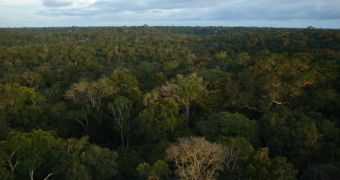Investigators working deep in a Brazilian forest managed to collect samples of aerosols that are largely free from contamination with chemicals produced by human activities.
This is the first time such an accomplishment is made, researchers say. Analysis of the collected aerosols revealed that they were in near pristine, pre-industrial conditions.
From this standpoint, members of the group that made the findings should be called “archaeologists of the air,” analysts say jokingly.
The environmental engineers conducted their campaign in the remote Amazonian Basin, just north of Manaus, Brazil. The area here is still pristine, and very little touched by human hand.
These findings could have significant implications for climate science, experts believe, seeing how analyzing the aerosols could provide us with more data on how clouds form, or on the specific chemical differences between natural and polluted environments.
Additionally, such a study could provide us with a deeper understanding of how the Amazonian Basin as a whole influence both local and global climate patterns.
Full details of the new conclusions appear in the September 17 issue of the top journal Science, report experts with the US National Science Foundation (NSF).
“This study shows that in this very pristine environment, there is a close linkage between emissions from plants, aerosols, clouds, and precipitation,” expert Anne-Marie Schmoltner explains.
“By doing a thorough chemical analysis of the aerosols in the Amazon region, this team could show that organic compounds can be predominant in the formation of atmospheric aerosols,” adds the official, who is based at the NSF Division of Atmospheric and Geospace Sciences.
The DAGS provided the funding the team needed to conduct the study.
“We basically had two 'travel' days' worth of pure air movement over 1,600 kilometers before the air came to our measurement site,” explains Scot Martin, the lead author of the Science paper.
“By performing the study in the rainy season of central Amazonia (January-March), we avoided contamination. Well-known periods of burning and deforestation occur in the dry season and also largely on the southern edge of Amazonia,” he adds.
The expert holds an appointment as an environmental chemist in the Harvard University's School of Engineering and Applied Sciences (SEAS).
“Those particles are affecting cloud formation and cloud formation is affecting precipitation which is affecting the plants. This is what we call the great tropical reactor. Everything is connected and in our research we finally had a real glimpse of natural aerosol-cloud interactions,” Martin concludes.

 14 DAY TRIAL //
14 DAY TRIAL //